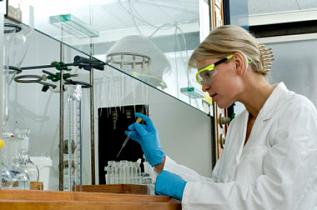Japan's hot nuclear particles reaches U.S. food supply
It is well established that cow milk tends to reflect a concentration about 1,000 times the levels of radioiodines in the air over a pasture. This effect, called bioaccumulation, also applies (although to a lesser extent) to cesium-137 and strontium-90 in milk The radioactive 'distilling' effect in the air-grass-cow-milk-human chain is enhanced when it rains because precipitation is more effective at depositing airborne radioactive debris to the ground than with 'dry deposition.' Even on dry feed lots, cows drink from puddles of rain water and are exposed in other ways to their rain-soaked environment. So, the slightly radioactive levels in California air - according to recently released EPA data - that included a high reading of 0.068 picoCuries per cubic meter (March 18, San Francisco, CA) for iodine-131 means that pasture-fed dairy cow milk measuring 68 picoCuries per litre may have recently been on U.S. Northwest area store shelves.
internet site reference: http://www.nuc.berkeley.edu/node/1944
Comments
There are 0 comments on this post














